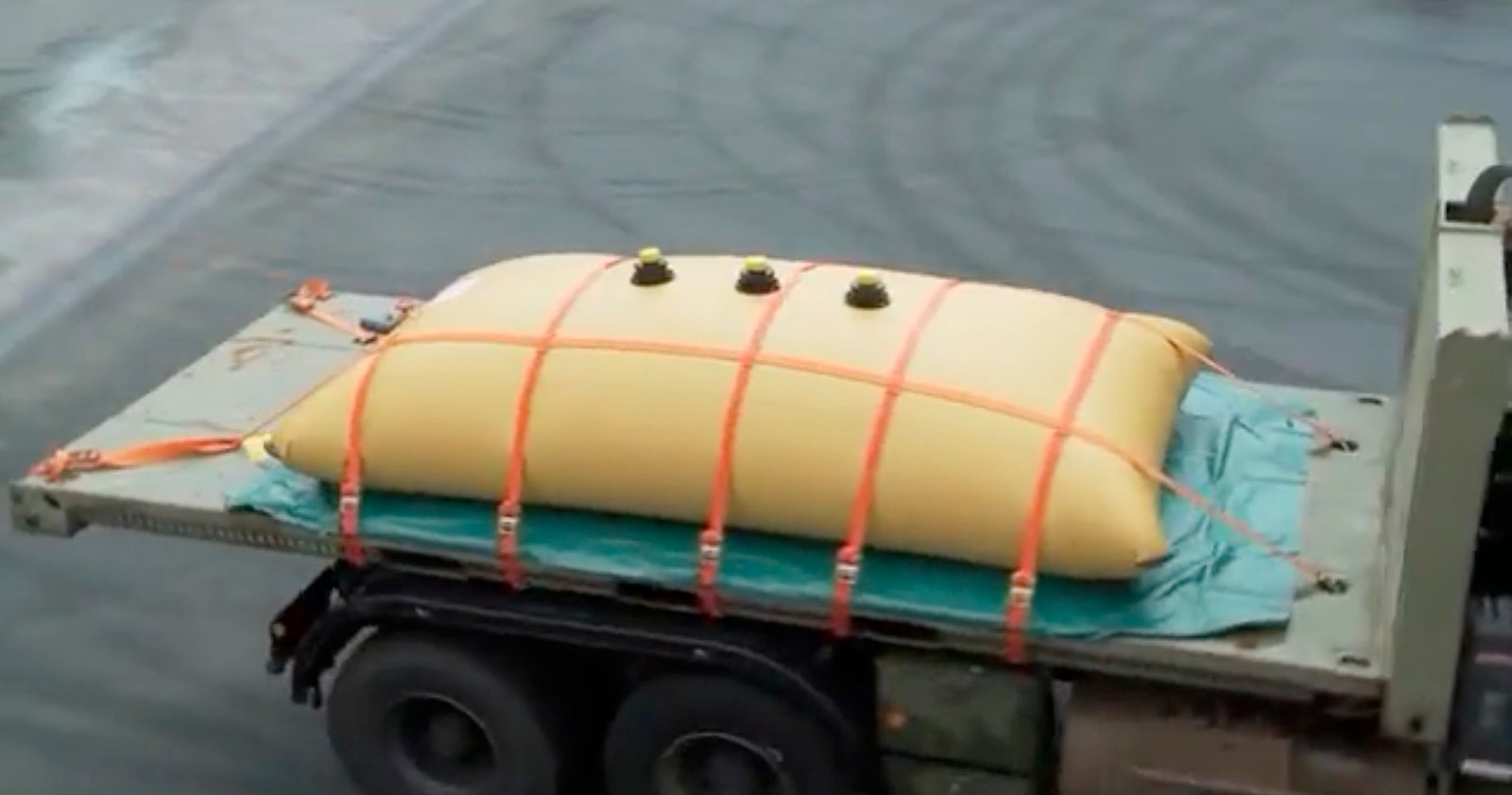A term you hear a lot on planes and boats these days is flexible fuel bladder, or collapsible tank. These are, quite literally, storage containers, made of tough fabric, that can be collapsed and stowed away.
The idea is not new. This type of tank was first used in World War II aircraft, such as the Spitfire, and other fighter planes. Indeed, you would have found flexible fuel tanks on the Vickers Wellington bombers, and de Havilland Mosquito.
As time went past, flexible tanks found all sorts of uses, carrying not only fuel and water, but also oils, chemicals, even wine. Advertising in the late 1950s compared them to the goatskins used by our ‘ancient forefathers’!
Safe And Efficient
It was when the tanks started to be used in F1 and rally cars, that we recognised not only their usefulness, but also the safety factor.
With the tanks greatly reducing the number of deaths from fire among racing drivers, they have been viable for vehicles since the late 1950s. But few car makers have used them.
Where flexible fuel bladders have found good use, however, is on boats and aircraft.
Anyone who has had to transport fuel tanks on a boat, plane or helicopter knows there are many factors involved. Size and safety are the most important.
Reducing The Dangers
Squeezing a rigid metal tank into a small space just isn’t viable, and can actually pose dangers to the crew. A flexible tank clearly offers many advantages here.
There are other key factors, too, such as vapours. Collapsible fuel bladders do not require ventilation, nor do they leak vapours, making them crash resistant and safer.
Even better, they can be collapsed and stowed away when not in use, providing more space for additional passengers or cargo.
Transporting Water
Of course, it’s not just large quantities of fuel that need to be carried on long flights or voyages. Plenty of water is also essential.
And again, anyone who has had to transport water tanks knows how bulky they can be. Even when the tank is empty, it’s still there, taking up as much space, with its sharp rigid design.
Given it was the air force who first saw the many benefits of flexible fuel bladders, it’s no surprise that the product is again finding interest amongst the military.
Indispensable To Military Organisations
From small, easily transportable fuel bladders, like the Turtle Buddy, to much bigger collapsible fuel tanks, these products are proving indispensable to military organisations around the world.
In the never-ending quest to improve and upgrade aircraft, flexible fuel bladders are being used to increase the range and endurance of frontline rotorcraft.
Indeed, in May, Gold Coast-based flexible tank manufacturer, Turtle-Pac, exhibited its products at the 10th International Helicopter Industry Exhibition, HeliRussia, in Moscow.
On Show In Russia
Not only do the tanks provide a safe and efficient way of carrying extra fuel for the flight, but they can also be used for drops.
Take the Drop Drum 205. Able to hold 55 gallons / 205 litres of fuel or water, these super tough tanks can be dropped with or without a parachute. This makes them ideal for both humanitarian air drops, and drops into hostile environments.
In trials, the Drop Drum 205 was filled and dropped from 500 ft, at 100 knots, onto solid packed sand and stones. It left no visible dent in the ground, and was recovered fully intact and undamaged.
It’s A Game-Changer
Drop Drum 205 then became the world’s first air droppable drum without a parachute. This allows deployment within a very short time, with no special crew training required.
Another great addition to the rotorcraft product market is the HeliRollDrum. Extremely tough and collapsible after use, the HeliRollDrum can be used to transport supplies to remote sites, or in emergencies.
Tested in the most extreme conditions, including the jungles of Papua New Guinea, this product is easily rolled out of a helicopter to the ground. It can also be used for a sling lift drop.
Collapsible long range aircraft ferry tanks were pioneered by Australian company, Turtle-Pac, back in 1991. They were used for trans ocean light plane flights from California to Australia.
Suitable For Boeing 727s
Today, the tanks can even be used by Boeing 727s. Not only do they extend the aircraft’s range, but can also be used by remote area operators for air cargo.
At HeliRussia 2017, Turtle-Pac showed three of its products, including the Drop Drum 205.
It also showcased its Air Cargo Tanks – double construction collapsible tanks that can be used by rotor or fixed wing aircrafts. Once empty, the aircraft can carry additional passengers or cargo, enabling a two-way revenue earning capacity.
Five Times Stronger
With a capacity of 2000 litres, these tanks are widely used in remote regions of Australia, Colombia, Canada, Alaska, Africa, and Antarctica.
Also on show were the Collapsible Ferry Tanks. So light and safe they can be used on virtually all helicopters, starting with the Robinson R22, these tanks can hold up to 2000 litres of fuel.
Used as auxiliary fuel tanks, this provides the aircraft with increased cost-efficient flight distance. An added benefit is that the tanks are about five times stronger than metal ferry tanks.





